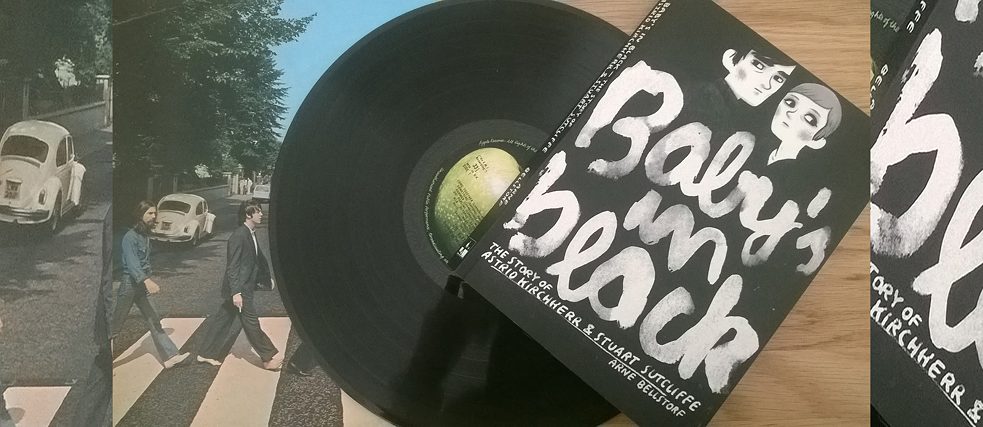June 2019
Arne Bellstorf: Baby’s in Black

Persepolis was probably my first introduction to graphic novels. The tale came to wider attention when it was adapted into a 2007 movie, and both book (translated from French by Blake Ferris, Mattias Ripa and Anjali Singh) and film tell of author Marjane Satrapi’s coming-of-age during the Iranian revolution. With simple but evocative black and white drawings, Persepolis is by turns fascinating, heart-wrenching and hilarious and became a worldwide success.
If, as it did for me, Persepolis whetted your appetite for the graphic novel genre, add Arne Bellstorf’s Baby’s in Black (tr. Michael Waaler) to your TBR pile. Although admittedly less far-reaching or political in its scope, Bellstorf’s work makes similarly evocative use of a deceptively simple drawing style, using black and white line drawings with occasionally rough pencil shading.
It is October 1960, and two young Francophile artists, Astrid Kirchherr and Klaus Voorman, discover a fantastic band from England playing in one of the roughest corners of Hamburg’s red light district. They come back night after night, and a friendship emerges between them and the young Liverpudlians, who – not yet famous – are sleeping in the cellar of an old cinema, next to the toilets. At the heart of the book is the instant connection and ultimately tragic relationship between Astrid and Stuart Sutcliffe, who played bass during the Beatles’ brief period as a five-person outfit.
The book really captures the suddenness and rightness of a particular kind of early love and the relationship is beautifully drawn. The chemistry of the sideways glances between Astrid and Stuart as they look out from different panels is impossible to miss, while Stuart’s gradual transformation to become ever more like Astrid is subtly and carefully worked in.
Bellstorf’s respectful and tender approach to his subjects informs the book, which is interspersed by the Beatles’ performances of rock ‘n’ roll classics. A significant influence is also Astrid’s own photography; Astrid took the first professional photos of the Beatles, defining their public image (she and her friends also inspired their early moptop haircuts), and Bellstorf adapts these pictures into the narrative. He also works versions of Astrid’s iconic early ‘selfies’ into expressive dream sequences, which both create a sense of continuity throughout the book and prefigure the loss which is to come.
Pop culture has never been my forte and a lot of the Beatles mythology has passed me by (ask my friend Beth about the time I told her I’d discovered a remarkable visual poet called Yoko Ono…), but after reading Baby’s in Black I dusted off my parents’ records and listened to those early hits while browsing Astrid’s striking and original photographs. From the lights of the Reeperbahn via the artists’ eccentric fashions to the almost constant cigarette smoke, Bellstorf’s drawings are deeply evocative of time and place. Whether you’re a cultural tourist or a megafan, Baby’s in Black offers a fascinating glimpse into the early days of the not-yet-iconic Beatles.